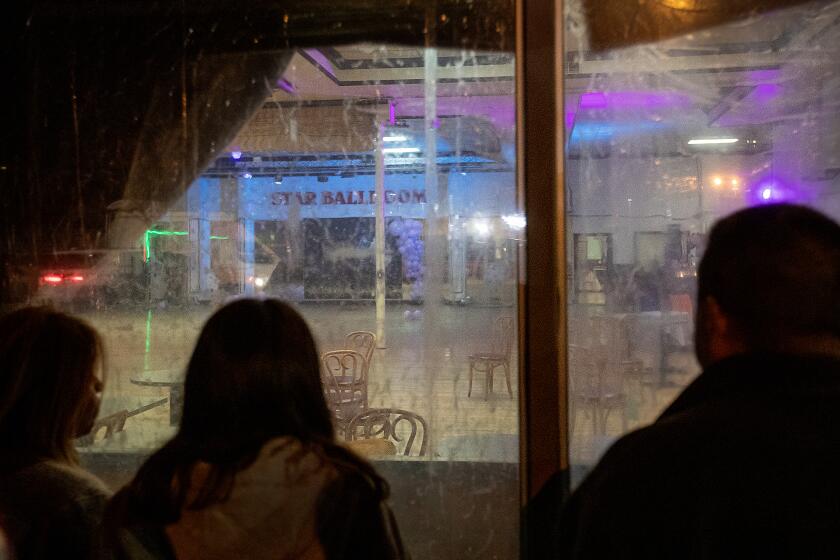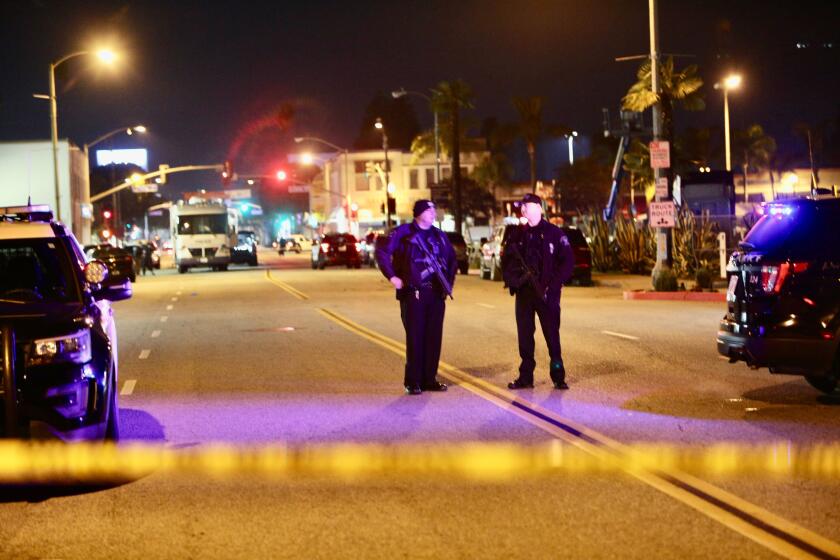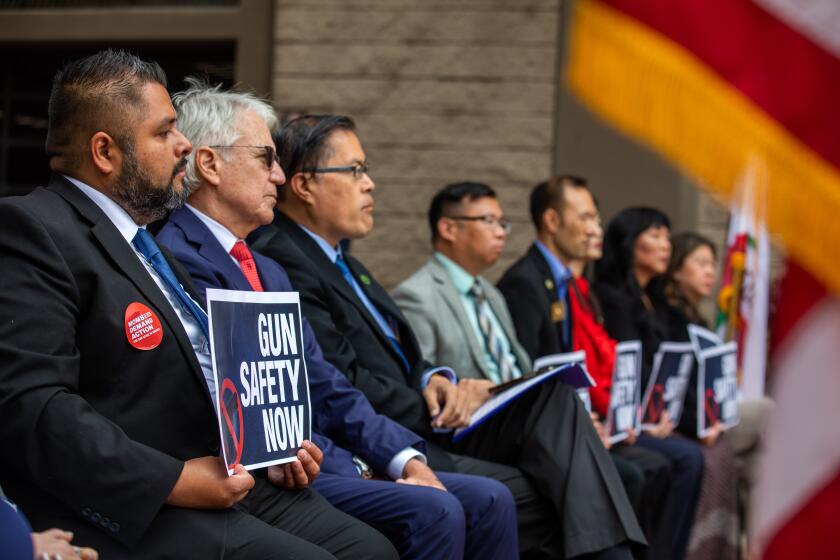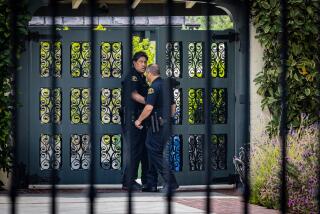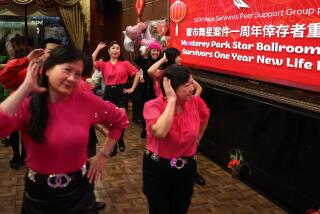Monterey Park gunman sent manifesto to law enforcement, sheriff says
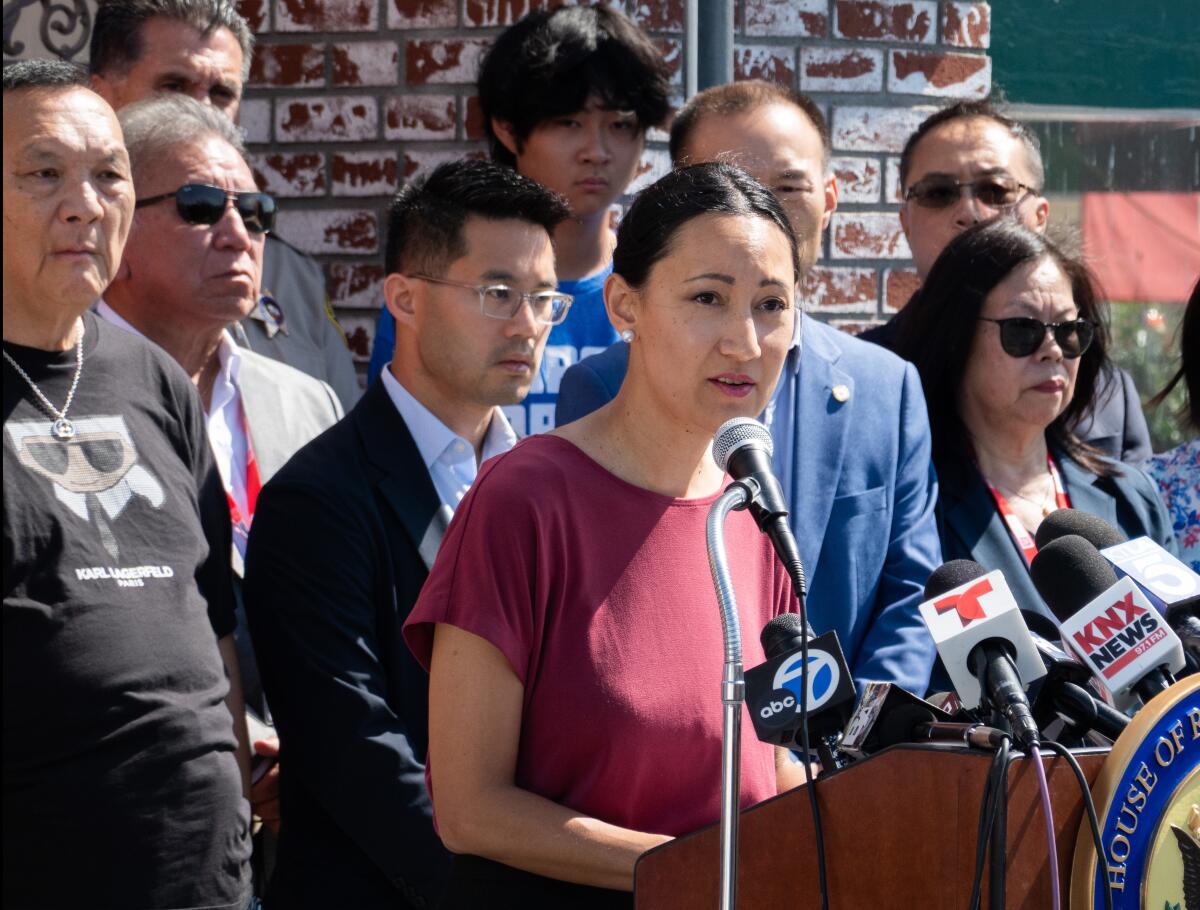
- Share via
The shooter responsible for killing 11 people and injuring nine others at a Lunar New Year celebration in Monterey Park six months ago sent a manifesto to law enforcement, Los Angeles County sheriff’s officials said Friday at a news conference.
Sheriff Robert Luna did not disclose what was inside the communication sent by Huu Can Tran, 72. The FBI now has the documents related to the Jan. 21 massacre and is investigating, Luna said.
“They’re still analyzing it to try to figure out what happened, why it happened,” the sheriff said. “I don’t know if we’ll ever have a motive, but we continue to try.”
Luna said he attended a debriefing about the shooting with the Buffalo Police Department and the FBI and learned “there were efforts made within the law to try and take action” against Tran.
“But just like everything else that we do, even in the red flag law we have in California now, a judge makes that decision,” Luna said. “We bring the information forward and it has to be that way. I think everybody wants a fair assessment or an analysis of if an individual truly poses a threat to our community.”
A gunman opened fire at a Monterey Park dance studio late Saturday, killing 10 people and wounding 10. He went to another dance studio in Alhambra but was disarmed by two people and later killed himself in Torrance.
The Sheriff’s Department didn’t respond to a request for comment about when the manifesto was sent to authorities and when it was referred to the FBI.
Law enforcement officials and politicians gathered at the Star Ballroom Dance Studio in Monterey Park, the site of one of California’s worst mass shootings, to announce two bills aimed at bolstering gun control.
Rep. Judy Chu (D-Monterey Park) unveiled federal legislation aimed at bolstering so-called red flag laws by increasing funding and providing translation services to limited English-speaking communities. Extreme risk protection orders — or red flag laws — temporarily prevent a person who could hurt themselves or others from buying or possessing firearms and ammunition.
Chu sponsored the Language Access to Gun Violence Prevention Strategies Act, which would ensure in-language materials for communities with limited English proficiency as well as outreach to those communities and education to law enforcement and others.
She also announced the Fair Legal Access Grants Act, which would allocate $50 million annually to local and state governments to help community and family members navigate the legal system in trying to take firearms away from people deemed troubled or dangerous. The two bills are co-sponsored by Sen. Kirsten Gillibrand (D-N.Y.).
The language bill would provide translations for Department of Justice and Health and Human Services resources related to gun-violence prevention and direct the attorney general to ensure federal grant applications for funds related to extreme risk protection orders. It also would direct the attorney general and secretary of Health and Human Services to develop a national public awareness campaign for gun violence prevention and firearm ownership safety.
“This legislative package, enabled with a hopefully passed federal assault weapons ban and a universal background check, will substantially reduce gun violence nationwide,” Chu said. “The epidemic of gun violence does not have to continue. We don’t need to continue risking our lives when we leave our homes.”
The legislative push follows statewide gun control efforts that were introduced three months ago by Assemblymember Mike Fong (D-Alhambra), whose district includes Monterey Park.
Eleven people are dead after a man opened fire in a dance studio in Monterey Park. Police believe the shooter also targeted an Alhambra studio. Here’s what we know.
Twelve days before Tran opened fire at Star Ballroom, he twice went to a police station in Hemet and voiced paranoid threats to authorities, telling them that his family had defrauded and tried to poison him, according to documents from the San Gabriel Police Department.
He was arrested in November 1990 on suspicion of illegally possessing a firearm, police records show.
Tran used a Cobray M11-9 assault pistol in the Monterey Park shooting, Luna said after the attack. The weapon was purchased in February 1999 in Monterey Park and wasn’t registered in California. Police also found a Norino 7.62x25-caliber pistol in a van in a Torrance strip mall where Tran killed himself the following day, and a Savage Arms .308 bolt-action rifle in his home.
In Monterey Park, site of mass shooting that killed 11, lawmakers urge support for gun control bills
Lawmakers and community leaders gathered in Monterey Park, where 11 were shot to death Jan. 21, to urge support for gun control bills.
Kristenne Reidy, the 34-year-old daughter of Monterey Park shooting victim Valentino Alvero, 68, told The Times that some of her fondest childhood memories involved watching her parents dance. Alvero emigrated from the Philippines in the 1980s and raised his son and daughter primarily in Monterey Park.
During the shooting, Alvero pulled his dance partner to the floor as Tran was reloading his gun, according to Reidy. Alvero shielded his partner with his body and was shot, while his partner was unharmed. The woman credits Alvero with saving her life.
Reidy said during the news conference that she received the coroner’s report on her father’s death on July 4. She learned he died of a single gunshot.
“It just takes one bullet to end a person’s life,” she said. “One bullet, one second, one gun in the wrong person’s hand. That’s why it’s so important for the community to know, to recognize and to have the power to have guns taken away from people who should not have them.”
In Monterey Park, site of mass shooting that killed 11, lawmakers urge support for gun control bills
Lawmakers and community leaders gathered in Monterey Park, where 11 were shot to death Jan. 21, to urge support for gun control bills.
In the first three years after California’s red flag law was implemented in 2016, 58 potential mass shootings were prevented, including six that included minors targeting schools, according to a 2022 study from the UC Davis Health Violence Prevention Research Program. As of May 2023, at least 21 states and the District of Columbia have enacted red flag laws.
The study found that about half of all mass shooters and nearly all school shooters express their plans to others. Most engage in concerning or threatening communications before an attack, and they often have a history of violence, including domestic violence, the study showed.
More to Read
Sign up for Essential California
The most important California stories and recommendations in your inbox every morning.
You may occasionally receive promotional content from the Los Angeles Times.
